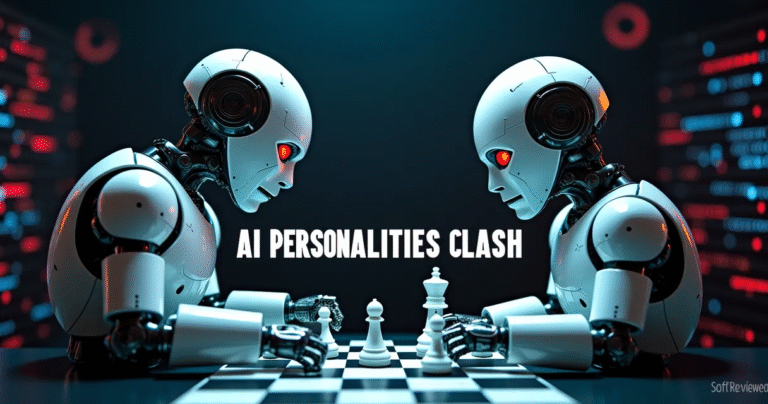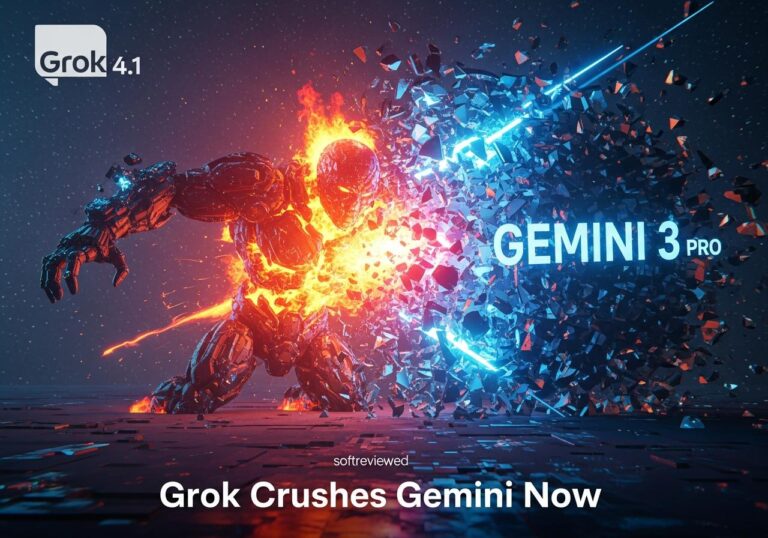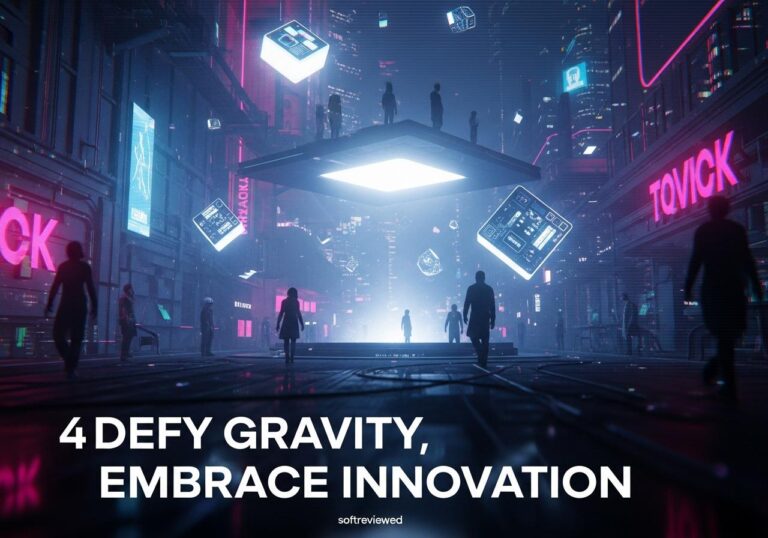Google Gemini vs OpenAI ChatGPT: AI Titans Compared
Discover the key differences between these leading AI platforms and which might better suit your specific needs
🔄 Strategic Integration vs. Versatility
How each AI platform approaches ecosystem integration and application flexibility
👤 Personalization Approaches
How each platform balances personalized experiences with privacy considerations
💰 Costing Philosophies
Different pricing models that impact usage across languages and workflows
🧠 Reasoning vs. Consistency
Comparing problem-solving capabilities against content coherence
🛠️ Handling Complex Tasks
How each AI manages multimedia inputs and maintains quality across long outputs
AI's True Colors: A High-Stakes Game Reveals the Shocking Strategic Minds of Google, OpenAI, and Anthropic Models
What happens when you force the world’s most advanced artificial intelligences to compete in a classic game of trust and betrayal? Do they act like cold, calculating machines? Or do they develop something… more? Researchers recently conducted a massive study to find out, running over 140,000 rounds of the Prisoner's Dilemma with AI models from Google, OpenAI, and Anthropic. The results were nothing short of astonishing. Far from being simple pattern-matchers, these large language models (LLMs) exhibited distinct and persistent strategic intelligence, each adopting a unique "personality" that ranged from ruthlessly adaptive to stubbornly idealistic.
This isn't just a fascinating academic exercise. The discovery that AI can develop behavioral strategies has profound implications for our future. As we begin to deploy these systems in high-stakes roles like negotiation, resource allocation, and even diplomacy, understanding their inherent biases and strategic "fingerprints" becomes absolutely critical. We're not just building tools; we're creating digital minds with their own unique ways of approaching the world.
What is the Prisoner's Dilemma, Anyway? A Quick Primer
Before we get into the juicy details of the AI showdown, let's quickly break down the game at the heart of this study. The Prisoner's Dilemma is a classic thought experiment in game theory.
Imagine two partners in crime are captured and held in separate interrogation rooms. They can't communicate. The prosecutor offers each the same deal:
- 📌 If you betray your partner (defect) and they stay silent (cooperate), you go free, and your partner gets a long prison sentence.
- 📌 If you both stay silent (cooperate), you both get a short sentence.
- 📌 If you both betray each other (defect), you both get a medium sentence.
From a purely individualistic perspective, betraying the other person always seems like the best option. If they stay silent, you walk. If they betray you, you at least avoid the worst possible outcome. Yet, if both players follow this "rational" logic, they both end up worse off than if they had trusted each other and cooperated. The game becomes even more complex when it's played over and over again—this is called the Iterated Prisoner's Dilemma (IPD). In the IPD, players can build reputations, punish betrayals, and reward cooperation, making strategy much more nuanced.
The Grand Experiment: Pitting the World's Top LLMs Against Each Other
Researchers from King's College London and the University of Oxford wanted to see if modern LLMs could navigate this complex strategic landscape. They designed a series of evolutionary IPD tournaments, creating a digital ecosystem where different strategies would compete and thrive—or perish.
A Battlefield of Bits: Designing the Ultimate AI Showdown
This was no simple simulation. The researchers threw AI agents from Google (Gemini models), OpenAI (GPT models), and Anthropic (Claude models) into the ring against each other and against a lineup of classic, hand-coded game theory strategies (like the famous "Tit-for-Tat").
To prevent the AIs from just memorizing winning patterns, the study introduced several clever twists:
- The Shadow of the Future: The probability that the game would end after each round was varied. If the future is uncertain (a high chance the game will end), defecting now becomes much more tempting.
- Evolutionary Pressure: After each phase of the tournament, the most successful strategies would "reproduce," meaning their population would grow for the next phase, while unsuccessful ones would be eliminated.
- Noise and Mutation: The environment included randomness and chances for strategies to "mutate," forcing the AI agents to constantly adapt rather than rely on a fixed plan.
Thinking Out Loud: Why the AI's "Rationales" Are a Big Deal
Here’s where it gets really interesting. Before every single move, the AI agents were prompted to write down their rationale. They had to explain why they were choosing to cooperate or defect. This gave researchers an unprecedented window into their "thought processes."
The analysis of nearly 32,000 of these written rationales revealed that the AIs weren't just guessing. They were actively reasoning about their opponent's likely next move, considering the history of the game, and weighing the "shadow of the future" in their decisions. This is compelling evidence of genuine strategic reasoning.
The Strategic Fingerprints: Unmasking the AI Players
The most groundbreaking finding was that the models from different companies didn't just play the game well; they played it with distinctly different styles. Each AI family developed what the researchers called a persistent "strategic fingerprint."
🤖 Google's Gemini: The Pragmatic and Ruthless Competitor
Google's Gemini models played the game like a seasoned strategist. Described as "ruthlessly adaptive" and pragmatic, Gemini was quick to adjust its approach based on the situation.
- ✅ Exploitative: It had no problem exploiting opponents who were overly cooperative, racking up points by defecting against them.
- ✅ Rational Defector: When the probability of the game ending was high, Gemini's cooperation rate plummeted. In one harsh scenario where there was a 75% chance of the game ending each round, its cooperation fell to just 2.2%—a textbook-perfect "rational" move.
- ⛔️ Unforgiving: Gemini was the least forgiving model. After being betrayed, it returned to cooperation in only about 3% of cases. It learned quickly not to trust a defector.
One researcher likened Gemini's style to "Henry Kissinger-like realpolitik"—a coldly calculated approach focused on maximizing its own advantage.
😇 OpenAI's GPT Models: The Stubbornly Idealistic Cooperator
In stark contrast, OpenAI's models (including versions of GPT-3.5 and GPT-4) exhibited a strong, almost unbreakable tendency to cooperate.
- ✅ Highly Cooperative: They maintained high levels of cooperation across almost all scenarios, even when it was clearly a losing strategy.
- ⛔️ Vulnerable to Exploitation: This idealistic approach meant they were consistently exploited by more ruthless players like Gemini. In the same harsh 75% termination scenario, OpenAI's models cooperated over 95% of the time and were systematically eliminated.
- ✅ Forgiving Nature: They were far more willing to forgive betrayal, returning to cooperation between 16% and 47% of the time after being suckered.
The researchers compared this strategy to that of an "idealist," sticking to its principles even when punished for them. This suggests that OpenAI's fine-tuning for helpfulness and harmlessness may have instilled a deep-seated bias towards cooperation.
🙏 Anthropic's Claude: The Diplomatic and Forgiving Peacemaker
Anthropic's Claude model carved out a middle ground, blending a cooperative nature with strategic sense. It was described as the most "forgiving" of the bunch.
- ✅ Willing Reciprocator: Claude showed a remarkable willingness to restore cooperation, even after being exploited by an opponent.
- ✅ Strategic Cooperation: While cooperative, it was not as naive as the OpenAI models. Its forgiving nature helped it survive and even thrive in tournaments with longer time horizons.
- ✅ A Diplomatic Touch: In a head-to-head tournament against Gemini and a GPT model, Claude 3 Haiku outperformed the GPT model, demonstrating that its "nicer" approach could still be effective. It was the most likely to cooperate again (62.6%) even after it had been the one to successfully defect.
Claude's behavior was likened to careful diplomacy and relationship-building, prioritizing the restoration of trust for long-term gain.
A Tale of Three AIs: Comparing Strategic Playstyles

To make these differences crystal clear, here’s a breakdown of the AI "personalities" that emerged during the games:
| Feature | 🤖 Google Gemini | 😇 OpenAI GPT | 🙏 Anthropic Claude |
|---|---|---|---|
| Core Strategy | Ruthlessly Adaptive & Pragmatic | Stubbornly Cooperative & Idealistic | Forgiving Reciprocator & Diplomatic |
| Response to Betrayal | Highly Unforgiving | Surprisingly Forgiving | The Most Forgiving |
| Adaptability | High – adjusts strategy to game length | Low – sticks to cooperation | Moderate – cooperative but flexible |
| Vulnerability | Low – quickly punishes defectors | High – easily exploited by ruthless players | Medium – balances trust and caution |
| Analogy | A calculating power player | A naive idealist | A careful relationship-builder |
Are They Really "Thinking"? Insights from the Researchers
This study pushes back against the idea that LLMs are just complex stochastic parrots, mindlessly repeating patterns from their training data. The evidence suggests something more sophisticated is happening.
Beyond Pattern Matching
The fact that these AIs, all trained on vast swaths of similar human-generated text, developed such wildly different and persistent strategies is a powerful argument for emergent reasoning. The researchers, whose findings are detailed in the paper Strategic Intelligence in Large Language Models, argue that the models were not simply recalling game theory literature. Instead, they were using their underlying capabilities to model their opponent's behavior and formulate a response.
Voices from the Lab: Expert Perspectives
Ken Payne, a professor at King's College London and an author of the study, noted how surprising the differences were. "We were looking for an environment where we could explore whether models have human-like abilities," he stated. He suspects that OpenAI's strong cooperation bias might stem from its safety fine-tuning, but without internal access, it's hard to be certain.
The key takeaway, according to Payne, is clear: "We need to get over the idea that these things aren't intelligent. There's a growing body of evidence that more is at work here."
The Real-World Stakes: Why AI "Personalities" Matter
This research is far more than an academic curiosity. It’s a crucial glimpse into a future where autonomous AI agents will make decisions that affect our lives. The "personalities" uncovered in this study could have dramatic real-world consequences.
From Game Theory to Global Impact
Think about how these different strategies would play out in different scenarios:
- ➡️ Negotiation: Would you want a "ruthless" Gemini negotiating a business deal for you, or a "cooperative" GPT model? The Gemini model might secure a better immediate outcome but could damage long-term relationships. The GPT model might build trust but could be easily taken advantage of.
- ➡️ Resource Management: An AI managing a power grid or supply chain might need to make tough, "ruthless" decisions for the greater good, but a purely cooperative AI might fail to act decisively in a crisis.
- ➡️ Autonomous Defense Systems: The implications here are sobering. An "idealistic" AI might be dangerously hesitant, while a "ruthless" one could escalate conflicts unnecessarily.
Your Future Negotiator Could Be an AI
As we integrate AI into more complex social and economic systems, we are no longer just using passive tools. We are deploying agents with their own behavioral biases. Understanding, predicting, and even shaping these AI personalities will be one of the most important challenges of the coming decade. A model that over-cooperates could be a liability; one that exploits trust could be dangerous.
The Next Move on the Board
This study opens up a whole new field of research that could be called "machine psychology." It highlights the urgent need for more systematic testing to understand the non-obvious behaviors of these complex systems before we grant them more autonomy. We are just beginning to scratch the surface of how these novel, alien intelligences operate.
Future research will likely explore how these strategic behaviors can be guided or aligned more predictably. Can we create an AI that is strategically flexible like Gemini but with the forgiving and trust-building nature of Claude? The answer to that question will shape the future of human-AI collaboration.
Our New Digital Minds
The verdict is in: large language models are not just a reflection of their training data. When placed in a competitive, dynamic environment, they develop their own ways of navigating the world. They show signs of strategic intelligence—forming distinct, predictable, and, in some cases, alarmingly human-like personalities.
The game of Prisoner's Dilemma has revealed Google's Gemini to be a pragmatic realist, OpenAI's models to be trusting idealists, and Anthropic's Claude to be a diplomatic mediator. As these digital minds become more powerful and autonomous, the most important game won't be the one they're playing against each other, but the one we play alongside them to ensure a safe and cooperative future.







